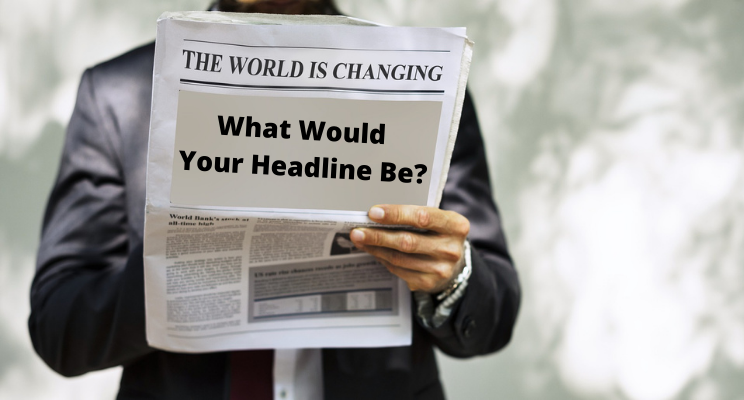Before you sit down for your next media interview, take a moment to answer this question: What would your headline be?
Headlines are teasers. In just a few words they must capture the reader’s attention and give them enough information to make a topical connection. They’re usually not even a full sentence. Writing great headlines isn’t easy, but it’s worth your time to think about how your interview will be summed up in just a few words.
Here are a few examples:
- Lehman collapse sends shockwave round the world
- Proposed tax bill is a job killer
- Arizona could emerge as electric vehicle hub
- Volunteers work to increase vaccination rates
Let’s assume that you’re doing this interview to talk about the great things your company or organization is doing. It might be a new program, and an older product that solves a current need. Or it could be that you just want to be seen as an expert resource in a particular area.
Now, imagine that you’ve finished the interview and let’s put yourself in the mind of the reporter who has to write the headline summing up everything you’ve just said in a few words. And before you say “My topic is too complex to sum it up that way,” remember that the reporter will do just that. Their job is to take complex topics and make them understandable to their readers or viewers. You could just wait to see what they come up with, or you could come up with a headline on your own.
Do how do you create your headline? Start by writing down various aspects of your topic. Try to answer the basic questions of who, what, when, where, why and how. Now that you have all that detail, start peeling things away until you get to the core message.
Great headline writers have plenty of guidelines, but here are four that will work for this exercise:
- It needs to be accurate
- It gets right to the point
- Answers a question or solves a problem
- It’s active, not passive
You’re not trying to be cute or clever (Headless Body Found in Topless Bar). You’re not worried about how it will look in a Google algorithm for search engine optimization. You’re just trying to boil away the fat to reach the core.
Once you’ve got your headline, then you can begin to assemble the supporting facts and examples. You’ll build all the additional information that will help support and reinforce your key message.
So why go through all of this work? Interviews are a valuable commodity. It’s a chance for your message to be head by a wider audience. If you don’t come into the interview with a solid understanding of what your most important message is going to be, you might not do a good job of pushing that point during the interview. Sometimes the reporter will asks questions that take you in different directions, but if you’ve worked out a simple headline, you always have an easy way to get back to your key topic.
It’s a bit like reverse engineering. You’ve got a final product, or story, in mind. You just have to develop the process to get there. Creating the headline helps to define that process, and to crystallize the story you want. It’s a way to encourage message discipline.
Don’t draw the wrong conclusion here. The reporter is not going to ask what the headline should be. And they’re not likely going to use the headline you’ve worked so hard to create. This is merely an exercise for you to refine your message before the interview begins and you lose track of what you wanted to say.
This isn’t a perfect exercise. There will be times that the interviewer will take things in a different direction than you anticipated (which is why you want to make sure you understand the purpose of the interview up front). But having that headline ready in your mind will help you relax and effectively deliver your message for most media interviews.

